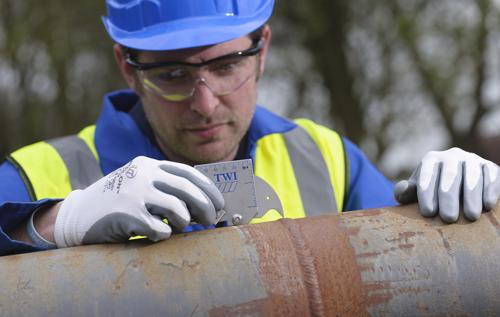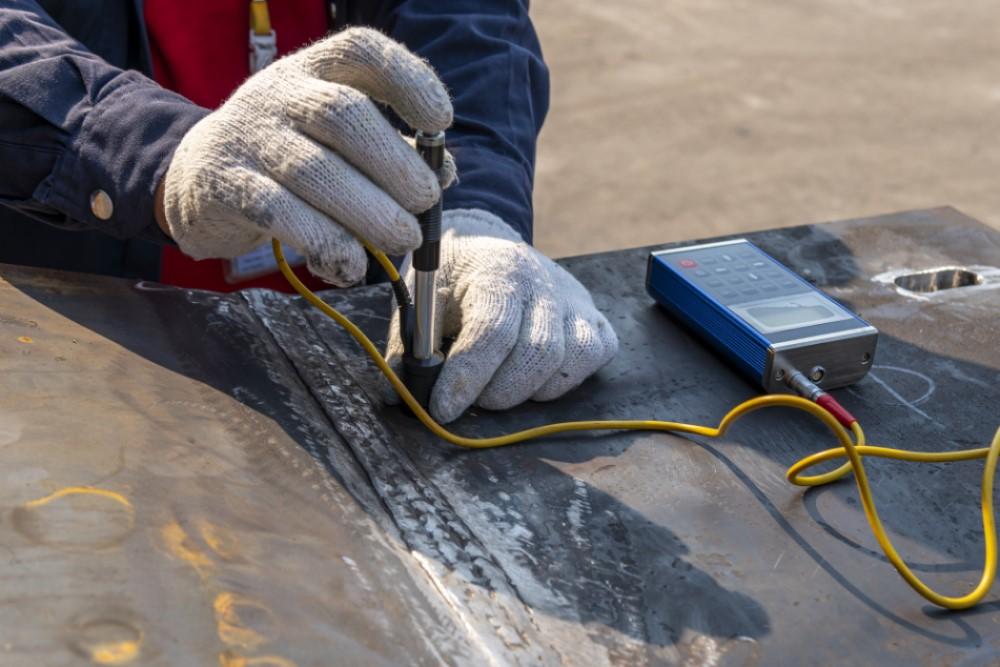Just How Welding Examination Functions: An In-Depth Analysis of Methods, Standard, and the Function of Examiners in Ensuring Architectural Stability and Safety
Welding evaluation is a necessary element in the construction and production industries, where the honesty of bonded joints is critical to safety and security and dependability. Numerous approaches, including non-destructive and visual screening techniques, are employed to discover prospective problems that could jeopardize architectural performance - Houston Welding Inspection. Examiners are tasked with not just evaluating weld top quality against strict requirements but likewise interpreting intricate codes and requirements. As we explore the complexities of this profession, the obstacles dealt with by assessors in preserving safety and security and compliance will certainly disclose a deeper understanding of their important role in protecting facilities.
Significance of Welding Inspection
Welding evaluation is crucial in guaranteeing the honesty and safety of bonded structures, with research studies showing that up to 70% of architectural failings can be mapped back to poor welding techniques. This emphasizes the significance of organized examination procedures throughout the welding lifecycle, from preparation to conclusion. Reliable evaluation not only determines flaws prior to they intensify right into substantial problems yet additionally ensures compliance with industry standards and guidelines.

The role of welding examiners expands past simple quality control; they are crucial in securing public security and lessening responsibility for organizations. By carrying out strenuous evaluation procedures, firms can identify troubles such as incomplete fusion, cracks, or extreme porosity, which can endanger the overall strength of a welded joint. Moreover, recurring training and qualification of inspectors contribute to the general quality control in welding operations, cultivating a culture of security and excellence.
In addition, welding assessment plays a critical duty in keeping operational effectiveness. Recognizing issues early in the process facilitates prompt rehabilitative activities, minimizing pricey rework and task hold-ups. Eventually, a durable assessment framework serves as a structure for reputable and long lasting bonded structures, guaranteeing they satisfy both functional and security demands.
Usual Evaluation Approaches
Just how can one make certain the quality of welded joints throughout the inspection process? The execution of different inspection methods is important in examining weld honesty and determining potential defects. Usual approaches consist of Visual Assessment (VT), which is commonly the initial line of protection, enabling examiners to discover surface area defects such as fractures, porosity, or insufficient blend by aesthetically analyzing the welds.
Ultrasonic Examining (UT) is an additional commonly utilized technique, utilizing high-frequency audio waves to determine interior problems within the weld. This method is especially reliable for finding issues that are not visible to the naked eye. Radiographic Testing (RT) makes use of X-rays or gamma rays to develop pictures of the weld, making it possible for the recognition of volumetric problems, such as voids or incorporations.
Magnetic Particle Examining (MT) and Liquid Penetrant Examining (PT) are also popular techniques, concentrating on surface area defects. MT relies on electromagnetic fields to disclose surface area and near-surface suspensions, while PT entails using a liquid color to highlight defects. Each of these techniques serves a distinctive purpose, making sure the detailed assessment of welded joints and protecting structural honesty and security.
Requirements for Evaluating Welds
The analysis of welds is directed by a collection of well-known standards that guarantee both functionality and safety and security in welded structures. These criteria encompass various factors, including weld dimension, profile, and penetration, which should adapt specified criteria. Conformity with industry codes, such as those established by the American Welding Culture (AWS) or the American Society of Mechanical Designers (ASME), is important in identifying the reputation of a weld.

Weld metallurgy plays a vital duty; the evaluation thinks about the fusion top quality between base and filler materials, as well as heat-affected zones. Lastly, the general mechanical buildings, consisting of tensile toughness and ductility, have to satisfy the needs developed for the specific application. Jointly, these standards make certain that welds not just satisfy aesthetic standards however likewise do dependably under operational problems.
Function of Welding Inspectors
A welding inspector's proficiency is pivotal in ensuring the integrity and quality of welded structures. These specialists play a critical duty in the construction and building process by verifying that welding operations follow established specs and standards. Their responsibilities incorporate an extensive series of jobs, including visual inspection of welds, evaluating welding documents, and performing non-destructive screening (NDT) techniques such as radiographic or ultrasonic testing to identify issues.
Welding inspectors are additionally in charge of translating welding codes and criteria, guaranteeing that the welders are certified and that the materials made use of satisfy the needed demands - Houston Welding Inspection. They need to maintain precise records of evaluations, which act as documents of conformity and high quality assurance. In addition, these assessors typically team up with designers and job managers to resolve any issues that develop during the welding procedure, offering suggestions for rehabilitative activities when needed.
Along with technological abilities, reliable interaction is essential, as welding inspectors should communicate findings plainly to stakeholders and help with training and guidance for welders. Ultimately, their role is important to preserving security and reliability in welded frameworks, adding dramatically to the overall success of building tasks.

Challenges in Welding Inspection
What challenges do welding inspectors encounter in their important duty? The intricacies of modern-day welding techniques and materials existing considerable challenges for examiners entrusted with making sure compliance with safety criteria and structural integrity. One main challenge is the fast innovation of welding modern technology; inspectors should constantly upgrade their knowledge and skills to continue to be efficient. This continuous education and learning is necessary to comprehending brand-new products and procedures, which can vary widely in qualities and needs.
Furthermore, More Info examiners frequently encounter variants in worksite conditions that can hinder inspection procedures. Aspects such as environmental conditions, availability, and the physical state of the welded structures can complicate detailed evaluations. Time constraints imposed by task timetables can additionally pressure assessors, possibly affecting the thoroughness of their analyses.
In addition, the subjective nature of some assessment visit the site approaches can cause disparities in analyses. Visual assessments may vary based on the inspector's experience and perspective. To alleviate these challenges, the fostering of advanced non-destructive screening techniques and standard protocols comes to be essential - Houston Welding Inspection. Inevitably, getting rid of these obstacles is essential for guaranteeing the safety and security and dependability of bonded structures throughout numerous markets.
Verdict
Welding evaluation is vital for keeping structural honesty and safety in various sectors. Via the application of diverse evaluation approaches and adherence to established requirements, assessors play a pivotal function in recognizing defects and making sure conformity with industry requirements. The challenges faced in this area highlight the need for continual improvement in evaluation methods and practices. Eventually, effective welding assessment adds dramatically to mitigating threats and boosting the total integrity of bonded structures.
Welding assessment is an important element in the building and manufacturing industries, where the integrity of welded joints is paramount to safety and reliability.Welding inspection is crucial in making sure the stability and safety of welded frameworks, with research studies indicating that up to 70% of architectural failures can be mapped back to visit this page insufficient welding practices. Their obligations include a thorough variety of tasks, consisting of aesthetic examination of welds, assessing welding paperwork, and performing non-destructive testing (NDT) methods such as ultrasonic or radiographic screening to identify issues.
Welding assessors are also accountable for interpreting welding codes and criteria, guaranteeing that the welders are qualified and that the materials used fulfill the essential requirements. Inevitably, reliable welding evaluation contributes substantially to mitigating dangers and boosting the overall integrity of welded frameworks.